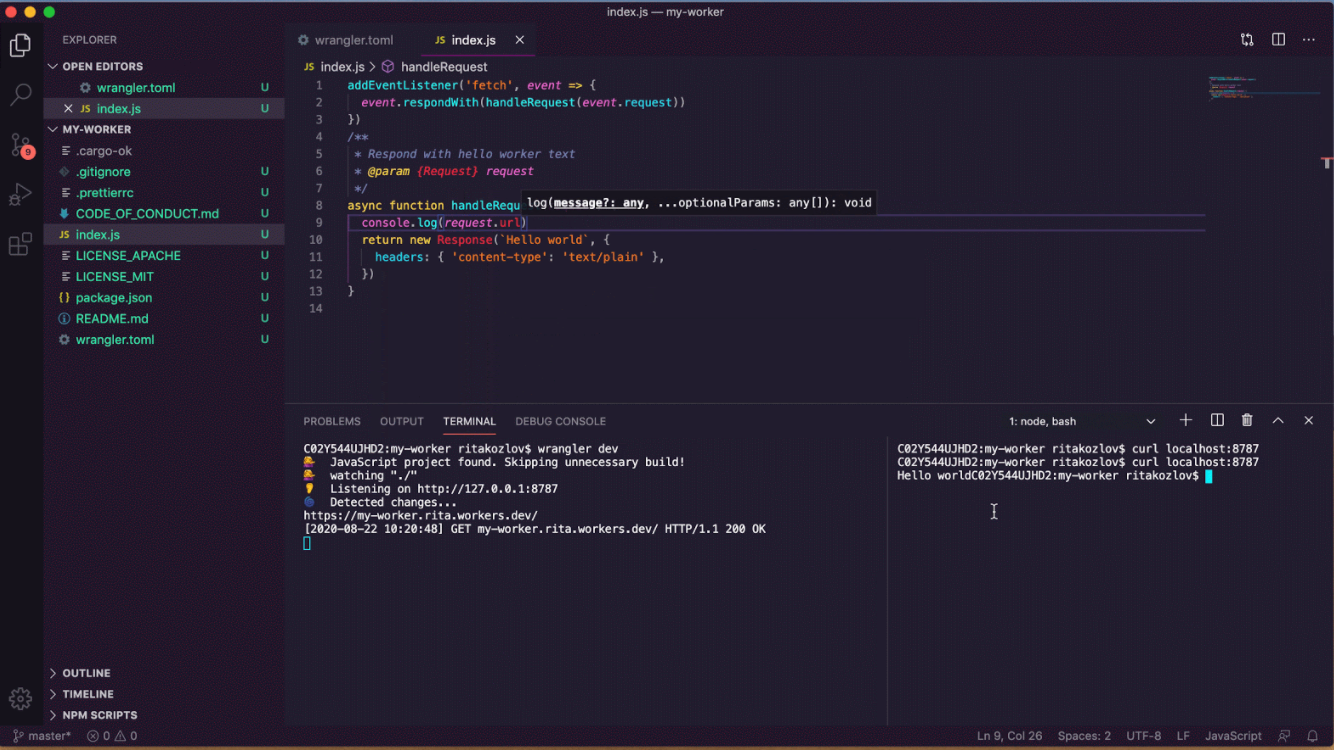Cloudflare Workers — our serverless platform — allows developers around the world to run their applications from our network of 200 datacenters, as close as possible to their users.
A few weeks ago we announced a release candidate for wrangler dev — today, we’re excited to take wrangler dev, the world’s first edge-based development environment, to GA with the release of wrangler 1.11.
Think locally, develop globally
It was once assumed that to successfully run an application on the web, one had to go and acquire a server, set it up (in a data center that hopefully you had access to), and then maintain it on an ongoing basis. Luckily for most of us, that assumption was challenged with the emergence of the cloud. The cloud was always assumed to be centralized — large data centers in a single region (“us-east-1”), reserved for compute. The edge? That was for caching static content.
Again, assumptions are being challenged.
Cloudflare Workers is about moving compute from a centralized location to the edge. And it makes sense: if users are distributed all over the globe, why should all of them be routed to us-east-1, on the opposite side of the world, causing latency and degrading user experience?
But challenging one assumption caused others to come into view. One of the most obvious ones was: would a local development environment actually provide the best experience for someone looking to test their Worker code? Trying to fit the entire Cloudflare edge, with all its dependencies onto a developer’s machine didn’t seem to be the best approach. Especially given that the place the developer was going to run that code in production was mere milliseconds away from the computer they were running on.
When I was in college, getting started with programming, one of the biggest barriers to entry was installing all the dependencies required to run a single library. I would go as far as to say that the third, and often forgotten hardest problem in computer science is dependency management.
We’ve not the first to try and unify development environments across machines — tools such as Docker aim to solve this exact problem by providing a prepackaged development environment.
Yet, packaging up the Workers runtime is not quite so simple.
Beyond the Workers runtime, there are many components that make up Cloudflare’s edge, including DNS resolution, the Cloudflare cache — all of those parts are what makes Cloudflare Workers so powerful. That means that without those components, a standalone runtime is insufficient to represent the behavior of Worker request handling. The reason to develop locally first is to have the opportunity to experiment without affecting production. Thus, having a local development environment that truly reflects production is a requirement.
#wrangler #cloudflare workers #serverless #developers
